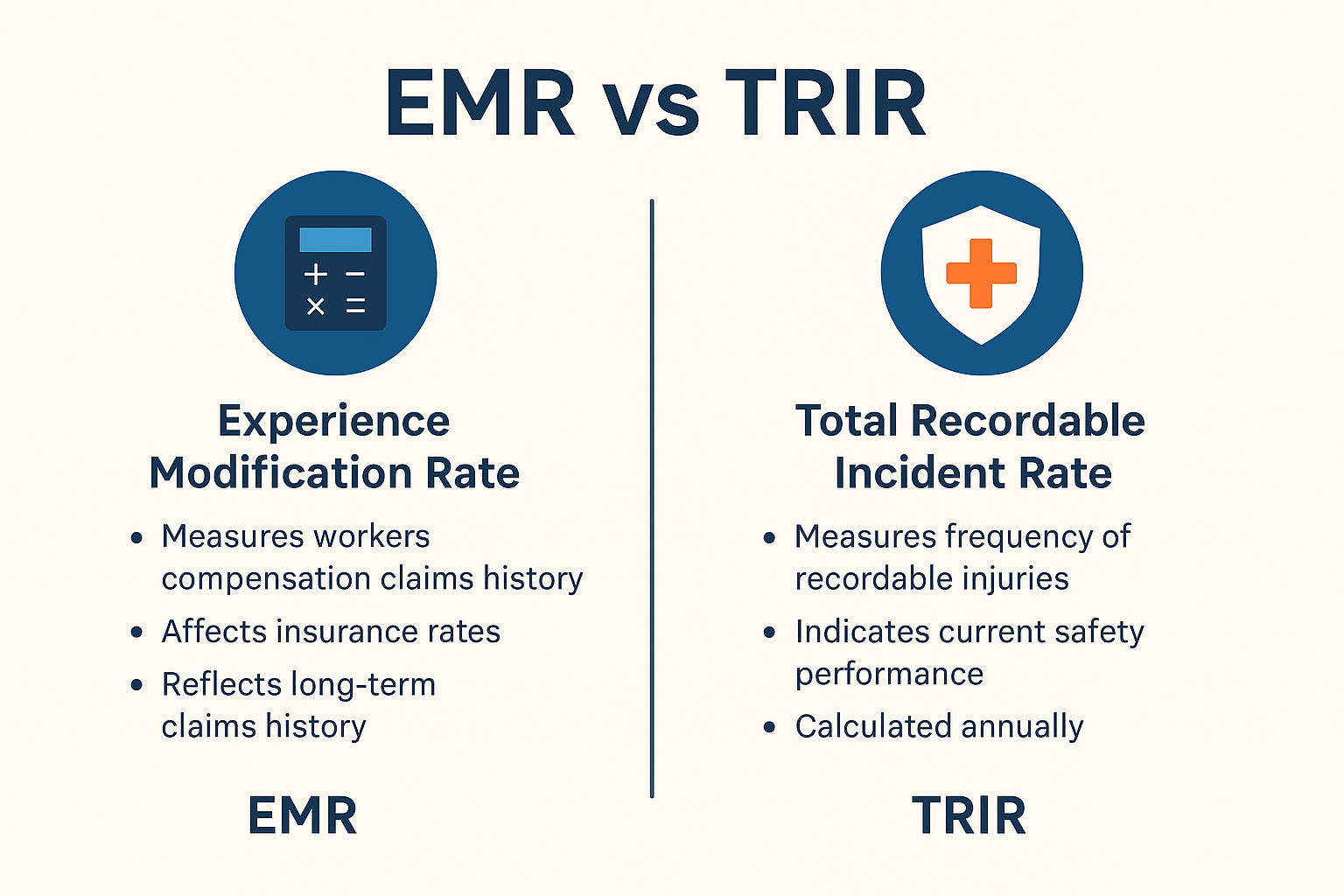Every workplace comes with risks. Some are obvious, others are hidden in daily routines.
Environmental, health, and safety (EHS) compliance helps protect workers, prevent accidents, and keep companies in line with regulations. When followed correctly, it supports safe working conditions and keeps businesses from facing steep penalties or enforcement actions.
Understanding the rules and applying them across business operations is not just a legal obligation. It also shows a company’s respect for its employees and the environment. Still, many organizations struggle with where to begin or how to keep up with changing expectations.
In this article, you’ll learn what EHS compliance means, how it impacts your organization, and the steps you can take to build a safer workplace.
What Is EHS Compliance?
Companies follow EHS compliance to meet safety, health, and environmental rules. These regulatory requirements come from the Environmental Protection Agency (EPA), the Occupational Safety and Health Administration (OSHA), and accepted industry standards like ISO 14001 and ISO 45001.
Your team needs more than paperwork to build a safe working environment. Proper EHS compliance helps prevent safety issues, supports employee health, and protects long-term operations. It covers everything from clear procedures and equipment use to regular reporting and audits based on defined safety regulations.
New rules appear often. Laws change, and EHS standards keep growing. You need simple tools and solid habits to stay compliant and reduce risk. When your company puts safety first, you create a culture that protects people and respects the environment.
Key Components of EHS Compliance
Every strong EHS program begins with three areas: environmental compliance, worker health, and workplace safety. These parts support your efforts to meet regulatory compliance and avoid the problems that come from violations or missed steps.
Environmental Compliance
Many businesses overlook their environmental impact until a violation appears. In 2023, for example, the EPA announced major increases in enforcement actions, including more inspections and higher fines. Handling chemicals, reducing air emissions, and protecting water quality now matter more than ever.
Clear steps, like spill response plans and material labeling, help keep operations clean and legal. Planning also builds public trust. Clients and other stakeholders expect responsible action.
Smart companies stay ahead by setting internal goals that meet or exceed environmental regulations. That approach keeps the company EHS compliant, even in a constantly evolving regulatory setting.
Building strong compliance programs protects the environment and your reputation. Clean records reduce business risk and improve long-term stability.
Occupational Health Compliance
Long work hours, chemical exposure, and poor ventilation all impact long-term well-being. The CDC connects many workplace injuries to conditions that develop slowly over time. You can’t solve these problems with equipment alone.
Health protections need routine monitoring, early reporting, and job-specific controls. Give workers proper personal protective equipment and update rules as needed. Focused programs help prevent illness, lower downtime, and improve employee health.
Well-written plans support your legal duties under occupational health rules. Following these standards helps your team work more safely and keeps you prepared for future inspections. When you follow the right steps, you stay compliant while showing workers that you care.
Safety Compliance
Every unsafe action or broken rule increases the chance of injury. The OSHA recorded over 2.8 million workplace injuries in the U.S. in 2022, many of which could’ve been avoided with better safety checks. Safety compliance tackles these risks directly.
You need strong policies, regular EHS inspections, and task-specific training. Common steps include inspecting equipment, reporting near misses, and correcting unsafe behavior. Following safety laws keeps your company legal and your employees protected.
Safety professionals help apply rules, identify weaknesses, and enhance daily routines. Look for recurring problems, consult with your team, and update procedures as needed.
Spotting a safety hazard before it causes harm saves time, money, and lives. Focus on what works, and make safety a shared goal in your organization.
Common EHS Compliance Standards and Regulations
Every business should follow rules that protect workers and the environment. Understanding these standards helps your team stay safe, follow the law, and support your organization’s long-term success. Meeting them also shows you respect your moral obligation to create a safe and responsible workplace.
The Occupational Safety and Health Administration (OSHA)
Federal safety rules from the OSHA apply to most industries. In 2023, the OSHA raised maximum penalties and increased field inspections to target repeat offenses. These rules cover fall protection, chemical exposure, emergency exits, and more.
Supervisors should train employees, report incidents, and correct issues without delay. Strong safety practices and proper oversight help prevent injuries and fines. Following OSHA rules not only meets your legal requirement, but it also builds trust across your workforce and lowers long-term risk.
The Environmental Protection Agency (EPA)
The EPA sets and enforces pollution limits for air emissions, toxic waste, and water quality. In 2024 alone, EPA actions led to over $1 billion in cleanup efforts and legal settlements.
Compliance requires more than minimum effort. Many responsibilities include self-reporting, spill control, and pollution tracking. EPA regulations shift between different regions, so each site needs a specific plan. A consistent system helps you comply with federal and local rules.
ISO 14001 and ISO 45001
International safety and environment standards offer structure and clarity. ISO 14001 helps reduce environmental damage. ISO 45001 improves health and injury prevention on job sites.
Both standards support your management process, reduce repeated problems, and help your team respond to audits with clear records. Companies that apply ISO guidance often improve their inspection outcomes and lower incident rates.
These tools don’t replace laws, but they give your team a system to track performance and apply proven methods.
State and Industry-Specific EHS Regulations
States often write safety rules beyond federal law. California, for example, leads in rules for heat illness and wildfire smoke. Construction and energy sectors also face added inspections and stricter limits.
Each rule affects how you train, check equipment, or document compliance. Use an EHS compliance checklist to follow all steps and stay alert to current regulations. Assign someone to review state updates and adjust your plan as needed.
Consequences of Non-Compliance With EHS
Unsafe conditions, weak safety training, or skipped reports put lives at risk. Workers suffer injuries, and the company faces legal trouble. Morale drops. Insurance costs rise. Public trust fades.
Failing to follow health and safety laws harms people, the environment, and your ability to grow. Consequences include:
- Fines from failed inspections
- Injuries and long-term illness
- Legal penalties and lawsuits
- Pollution and damage to water quality
- Lost business and reputation
- Delayed or disrupted services
- Lower employee morale and trust
Simple Tips to Improve Workplace Safety and Compliance
Improving safety doesn’t require massive changes. These actions improve your environmental health and safety efforts while helping your team work more safely every day:
- Perform regular walkthroughs: Look for hazards weekly. Spot problems with equipment, spills, or blocked exits early.
- Update safety documents: Keep all materials aligned with current regulations. Make them easy to read and access on the floor.
- Repeat employee training often: Short, job-based lessons help more than long lectures. Reinforce key tasks tied to safety.
- Build a culture of reporting: Support open feedback without punishment. Let your team report risks quickly and safely.
- Use digital tools: Track issues, inspections, and fixes using mobile apps. Leveraging technology cuts paperwork and improves speed.
Effortlessly Track and Maintain EHS Compliance With EHS Momentum
MyMomentum, the platform from EHS Momentum, gives your team the tools to manage compliance with less stress and better results.
MyMomentum helped companies like Atlas Energy and Miller Environmental reduce injuries, lower admin work, and build a strong safety culture. With this platform, you can focus on real improvements, not just checking boxes.
Key benefits of using MyMomentum:
- Centralized tracking – Log inspections, reports, and actions in one dashboard.
- Mobile-friendly tools – Let your crew report issues or complete tasks from any device.
- Standardized inspections – Use QR-code templates for consistency across sites.
- Real-time insights – Access instant reports to track progress and spot gaps.
Ready to simplify EHS compliance? Book a demo with EHS Momentum and make safety easier for your whole team.
FAQs About EHS Compliance
What does EHS stand for?
EHS stands for environmental, health, and safety.
What are the EHS requirements?
EHS requirements are rules and practices that help companies reduce risks to the environment, protect employee health, and create safer workplaces.
What is HS&E compliance?
HS&E compliance means following laws and standards related to health, safety, and environmental protection in daily operations.







